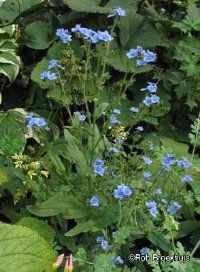Among the myriad species of forget-me-nots, some stand out for their unique characteristics and habitats. For example, the alpine forget-me-not (Myosotis alpestris) is a symbol of alpine beauty and resilience. Native to the mountainous regions of Europe, it thrives in rocky, high-altitude environments.
The alpine forget-me-not species is distinguished by its bright blue flowers with yellow centers, which create a striking contrast against the rugged landscapes where it grows. Its ability to flourish in harsh, cold environments makes it a remarkable example of nature's adaptability.
On the other hand, the woodland forget-me-not (Myosotis sylvatica) is a testament to the enchanting beauty of forested areas. Commonly found in the woodlands and shaded areas of Europe, this species prefers moist, shaded habitats, contrasting the alpine variety.
The wood forget-me-not blooms slightly larger flowers, usually in shades of blue but occasionally in pink or white. The Woodland forget-me-not's preference for shaded undergrowth makes it a popular choice for gardeners looking to bring a splash of color to darker areas of their gardens.
